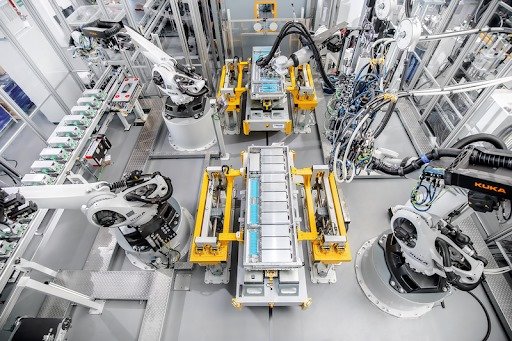Introduction to Industrial IoT (IIoT)
In its essence, IIoT refers to the interconnectivity of industrial devices through the internet, enabling seamless communication and data exchange. This technological marvel has become the backbone of modern industries, providing a robust infrastructure for efficient and smart operations.
Evolution of Industrial Processes
Traditionally, industries relied on manual processes and standalone machinery. However, the advent of IIoT has ushered in an era of automation and connectivity. The integration of sensors and advanced communication protocols has significantly enhanced the speed and accuracy of industrial processes.
Key Components of IIoT
At the heart of IIoT are its key components – sensors and actuators, connectivity solutions, and the integration of cloud computing for data storage and analytics. These elements work in tandem to create a network of intelligent devices capable of real-time decision-making.
Applications Across Industries
The impact of IIoT extends across various sectors. In manufacturing, it streamlines production processes, ensuring optimal resource utilization. Healthcare benefits from remote monitoring devices, while the energy sector sees improved efficiency in distribution. Transportation, too, undergoes a transformation with predictive maintenance and route optimization.
Challenges in Implementing IIoT
Despite its numerous advantages, implementing IIoT comes with its set of challenges. Security concerns regarding data breaches and cyber-attacks, integration issues with existing systems, and the initial cost of implementation are hurdles that industries must navigate.
Success Stories
Several industries have successfully integrated IIoT into their operations, resulting in increased efficiency and cost savings. Case studies highlight how predictive maintenance and real-time data analytics have revolutionized traditional workflows.
Future Trends in IIoT
As technology advances, the future of IIoT looks promising. Innovations such as edge computing, 5G connectivity, and enhanced artificial intelligence will further augment the capabilities of IIoT, opening new possibilities for industries.
The Role of Big Data in IIoT
The marriage of IIoT and big data is a game-changer. The abundance of data generated by interconnected devices allows for informed decision-making, predictive maintenance, and a deeper understanding of industrial processes.
Environmental Impact of IIoT
Beyond efficiency gains, IIoT contributes to sustainable practices. Through optimized resource utilization and reduced waste, industries can align their operations with environmentally friendly practices, minimizing their ecological footprint.
Risks and Mitigations
Identifying potential risks in IIoT implementation is crucial. From data security to system failures, proactive strategies such as encryption, regular audits, and redundancy planning can mitigate these challenges.
Global Adoption and Market Growth
The global adoption of IIoT is on the rise, with market projections indicating exponential growth. Industries worldwide are recognizing the transformative potential of IIoT and investing in its implementation to stay competitive.
The Human Element in IIoT
As industries embrace IIoT, the workforce undergoes a paradigm shift. Upskilling and training become imperative as employees adapt to working alongside intelligent machines, emphasizing the symbiotic relationship between humans and technology.
Integration of Artificial Intelligence in IIoT
Artificial intelligence enhances the decision-making capabilities of IIoT systems. Machine learning algorithms analyze data patterns, enabling more accurate predictions and efficient responses to changing conditions.
Regulatory Landscape
Governments and industry bodies are establishing standards and regulations to ensure the responsible implementation of IIoT. Compliance with these standards is essential for the ethical and secure use of this transformative technology.
Conclusion
In conclusion, the Industrial Internet of Things is not just a technological advancement; it’s a paradigm shift in how industries operate. From optimizing processes to fostering sustainability, IIoT is a catalyst for positive change. As we connect the dots of this technological wonder, the future promises even greater advancements and possibilities.


Leave a Reply